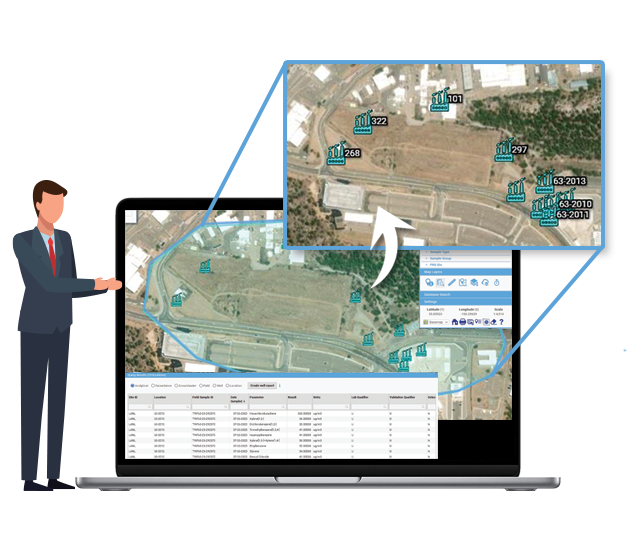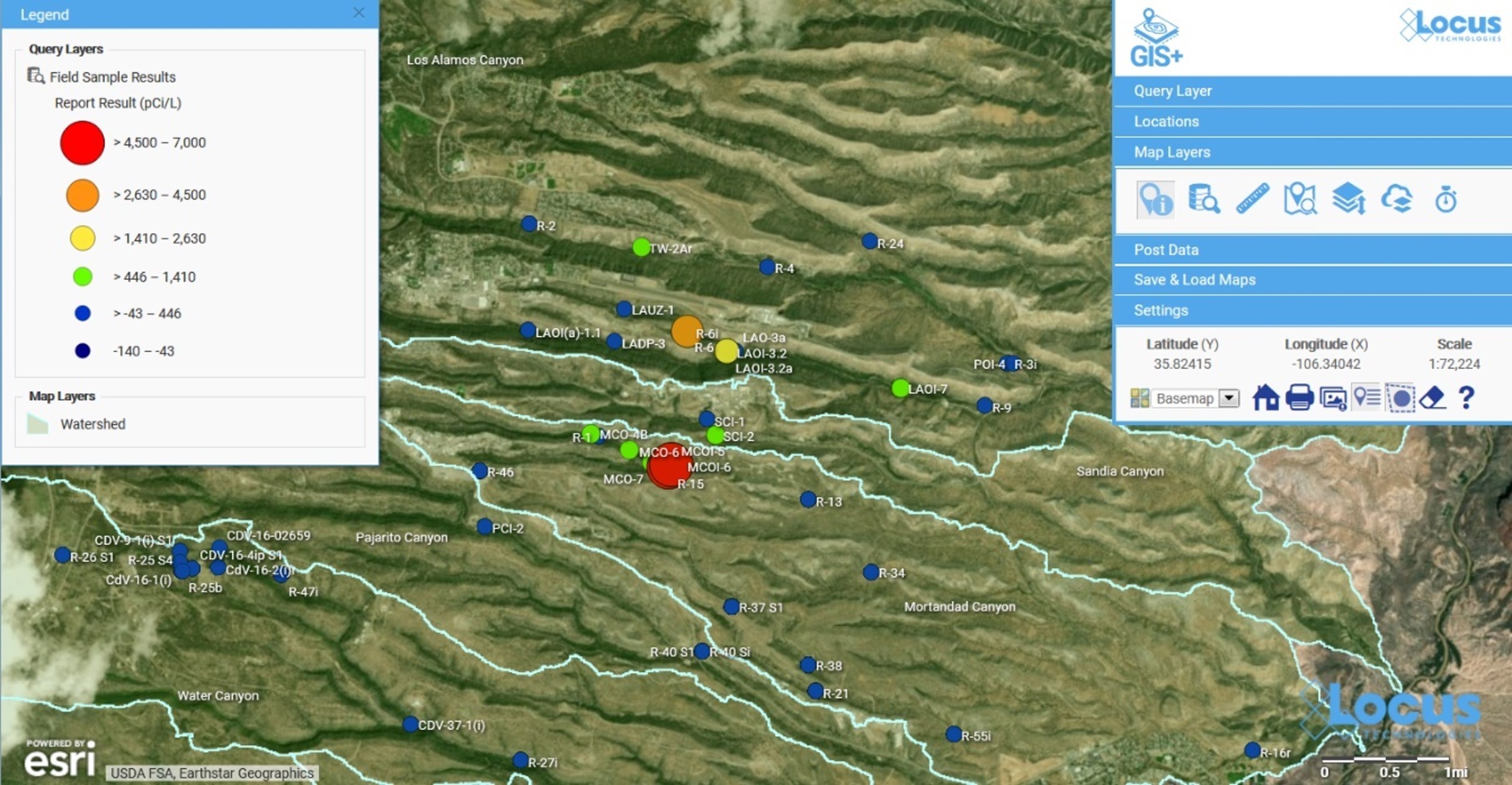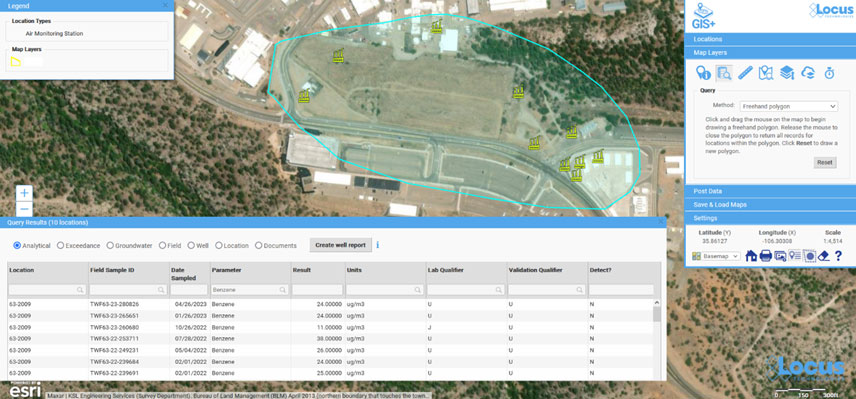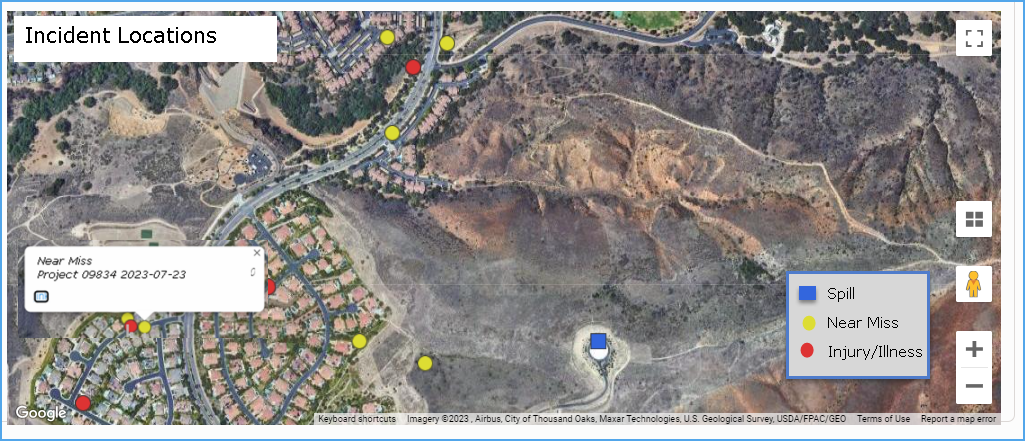
Geospatial Business Intelligence for your environmental projects (GeoBI)
Business intelligence (BI) is a critical component of any organization. BI lets you analyze data on your processes and products, so you have the information needed to make decisions and take actions to improve your business’s performance. BI applications have been available for several years, with offerings from many companies including Microsoft, Oracle, SAS, Qlik, and Tableau.
Initially, BI was focused on just a few areas such as finance, logistics, and sales. As BI effectiveness evolves you need information covering all aspects of your business. One key information set is spatial information, which is usually managed in a geographic information system (GIS). GIS applications have been available since 1965 but only became widely commercially available in the 1980s when ESRI released its first GIS applications. Since then, GIS has spread from the desktop to mobile devices and the cloud.
Often, an organization’s spatial data is separate from other data, kept in its own department or application. For example, your organization might have a GIS department that manages geographic information for your facilities. However, spatial data might also be in other departments such as sales (locations of clients); physical plant (buildings, infrastructure, assets); logistics (sales or delivery routes), or even human resources (safety incident locations). It can be challenging to bring together these disparate spatial data sources and integrate them with non-spatial data stored in spreadsheets, databases, files, and other data warehouses.
Several recent business trends, however, have made it much easier to bring together both spatial and non-spatial information to support GeoBI or Geographic Business Intelligence. First, the rise and ubiquity of the internet ‘cloud’ has made it possible for an organization to put all their data into the cloud. Your business staff can now access all your data, regardless of the physical location of the data or your staff. Second, GIS has evolved from its earlier days when it was a way to automate traditional cartography. Now, GIS supports advanced spatial analysis and visualization techniques, including buffering, contouring, interpolation, network analysis, and 3D mapping. And third, new applications and methods have broken the barriers between spatial and non-spatial data. GeoBI software applications can manage both types of data, letting you combine all your data for analysis and visualization. Applications that don’t explicitly support both types can be connected through the use of application programming interfaces (APIs) for seamless transfer of data.
GeoBI and Locus
Locus Technologies has been a leader in bringing GeoBI to environmental data management. Locus’ software supports non-spatial data analysis via reporting, charting, and expert query functionality. The Locus GIS+ add-on lets you add spatial data to your analysis with the GIS+ functions for spatial query, data classification, time series analysis, buffering, and contouring. Let’s look at some examples.
- Water quality: Clean water regulations may require your facility to identify and report any instances of chemical concentrations in water sources that are above certain action limits. To do this, you can load analytical results from chemical sampling into the application. Once the data is loaded, you can add the sampling results to the GIS+ along with overlays of plant assets, watersheds, aquifers, and other relevant geographic information. You can quickly generate maps showing concentrations at sample locations. In this way, you can identify ‘hotspots’ where your facility may be in non-compliance with regulatory requirements.
The example below shows the GIS+ displaying tritium results from water samples along with watershed boundaries. The map represents each location with a symbol that is colored and sized to reflect the actual maximum value at that location. You can easily see spatial patterns and identify two areas of concern near the center of the map – one with orange and yellow circles, and another with red circles. You could then use other functions, such as charting or contouring, to further explore the results at these locations.

- Air quality: Your facility may fall under clean air regulations such as the US EPA’s 40 CFR Part 60 Subpart OOOO standards. In short, this subpart establishes emission standards and compliance schedules for the control of volatile organic compounds (VOC) and sulfur dioxide (SO2) emissions). As an environmental manager, you could simply use a BI program to write and run a text query such as “show me all emission assets that have exceedances under 40 CFR Part 60 Subpart OOOO”.
However, Subpart OOOO often applies to the Oil and Gas industry where maps and GIS are heavily utilized. If you have data and maps, you can associate a data query to an area that is “lassoed” on the map. The example below shows several emission sites that have been grouped together by a user-drawn area. Locus shows a table of all data for the “lassoed” locations, including analytical results and regulatory exceedances. By simply putting a lasso around another set of emission locations, the query is automatically updated with the relevant results. No query needs to be written – you just need to lasso locations on a map!

- Safety: In a similar fashion, safety personnel can use a map to find different incident categories without having to train on reporting and query details. When an incident occurs, efficiency of logging the essential information is paramount, and simple pulldown list coupled with graphics expedite the process when time is of the essence.
Below is a map where the manager and incident for rapid input was pinned to a location and for follow-up on a particular region the manager can apply a lasso query to list all Significant Injuries and Fatalities (SIFs), for root cause and other analysis.

GeoBI and You
The above examples show how GeoBI can bring all your data together for use in analysis and decision-making, leading to a more complete picture of your facilities and processes. Furthermore, by having one suite of applications for your GeoBI needs, your organization can be more efficient. If spatial and non-spatial data are in separate silos, accessible only by different staff, it is difficult for one person to perform a complete analysis. Files, maps, spreadsheets, and other data objects must be shuffled between different persons and applications. With your data in Locus software, a full GeoBI analysis can be performed by one person, leading to productivity gains and cost reductions.
In the future, advances in artificial intelligence (AI) could lead to GeoAI, which would combine GeoBI with powerful features such as predictive analytics, pattern mining, and anomaly detection. Stay tuned for a future blog post on these exciting possibilities!
Acknowledgments: All the data used in the examples was obtained from the publicly available chemical datasets online at Intellus New Mexico.


